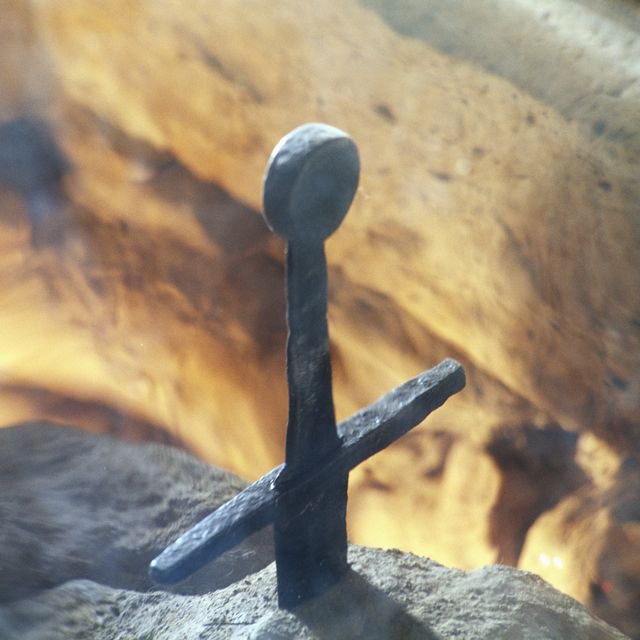
A team of archaeologists has unearthed a Celtic necropolis dating back to the second Iron Age, revealing a treasure trove of metal artifacts. Among the remarkable finds were two swords still encased in their beautifully adorned sheaths.
One of the swords features swastika motifs, a design with deep roots in Celtic tradition. While the symbol is predominantly associated in modern times with the atrocities of World War II, it predates the Nazi regime by centuries. Historically, the swastika has appeared in various cultures and religions, often symbolizing good fortune and spirituality. Recently, archaeologists in France discovered these two sheathed swords in a burial site that is approximately 2,300 years old, with one sword showcasing intricate swastika decorations on its copper scabbard.
The French National Institute of Preventive Archaeological Research (INRAP) reported that the metal artifacts and weaponry found in the tomb, which did not contain any skeletons, were of “exceptional craftsmanship” and have “few parallels” across Europe.
Both swords were discovered within their sheaths, and one has been described as “undoubtedly the most remarkable object of the necropolis.” The handle and front plate of the sheath, designed for waist wear, were crafted from copper and adorned with eye-like decorations known as ocelli. The lavish sheath also featured gemstones, with at least two of the embellishments displaying the swastika symbol.
The sword itself is characterized by a short, slender blade with an antennae-style handle made from iron. X-ray imaging revealed inlays on the blade’s upper section, including what likely represented a sun and crescent moon divided by a line. Vincent Georges, an archaeologist with INRAP and the excavation’s project manager, explained to Live Science that these significant cosmological symbols were part of a “widely recognized sacred concept associated with this type of sword” during the early fourth century B.C., a period favored by Celtic artisans.
Given its ornate design, Georges speculates that the sword was likely not intended for practical use but rather served as a status symbol within a military context. While he cannot confirm this with absolute certainty, he posits that the sword may have been crafted around the time of the Celtic incursions into northern Italy and the sacking of Rome in 383 B.C.
The second sword is longer and features rings for carrying at the waist. Although it is less decorated than the first, it still boasts gemstone embellishments on the sheath’s upper section and eye-like ocelli designs. Traces of fabric were also found within the sheath, possibly remnants of the deceased’s clothing, a shroud, or a protective casing. This more practical design, along with the discovery of fabric, suggests that it may have been used for its intended purpose.
Experts believe both swords were produced during the fourth century B.C. Georges noted that swastikas were prevalent in Mediterranean ornamental designs at the time, which Celtic culture adopted as it spread through mainland Europe. The earliest known Celtic use of the symbol likely aimed to evoke the image of the sun traversing the sky, symbolizing good fortune.
The excavation site in Creuzier-le-Neuf, a small French town that once served as a crossroads for major Celtic tribes, spanned 7,000 square feet and contained over 100 graves from the Second Iron Age. Unfortunately, the acidic soil conditions prevented the preservation of skeletons, with only one cremation accompanied by a vase being found.
Approximately half of the tombs contained metal ornaments, with bracelets being the most common—ranging from simple rolled copper to more intricate designs featuring clasps and decorations. The team also discovered 18 brooches made of copper or iron, the most striking of which showcased a gemstone and silver leaf motif. However, nothing was as extraordinary as the intricately adorned fourth-century B.C. sword embellished with gemstones and swastikas.











